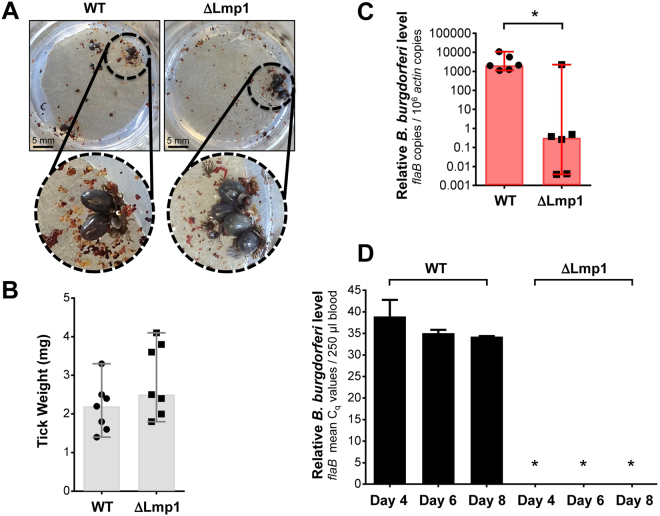Figure 3.
Transmission of wild type (WT) and lmp1 deletion mutant (∆Lmp1) B. burgdorferi using artificial membrane feeding. (A) Representative images show WT-infected and ∆Lmp1-infected nymphal ticks feeding on silicone membrane. (B) Nymphal tick weight after transmission. The weight of the replete ticks was measured. There was no statistically significant difference in weights between WT and ∆Lmp1-infected ticks (p > 0.05). Each dot represents a fully engorged tick with bars showing median weight (n = 7). Error bars are showing 95% CI. (C) B. burgdorferi burden in fully engorged nymphal ticks. After the WT-infected and ∆Lmp1-infected ticks completed feeding on blood meal, the spirochete burden was directly detected by qRT-PCR. Significant median decrease of ∆Lmp1 burden in ticks was detected compared to WT (p < 0.05) (n = 6). Error bars are showing 95% CI. (D) Spirochete burden in blood after nymphal tick transmission. The B. burgdorferi burden was detected in 250ul of blood sample after either WT-infected or ∆Lmp1-infected ticks fed on blood meal in artificial feeding chamber using qRT-PCR (n = 2). *Undetectable or extremely low level of ∆Lmp1 was transmitted to blood compared to WT isolate. Spirochete burden is expressed as mean ± SEM. Tick data shown in this figure originated from nymphal ticks collected after detachment or after day 8 at the completion of an experiment.

